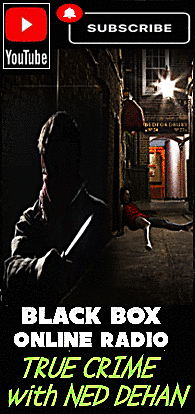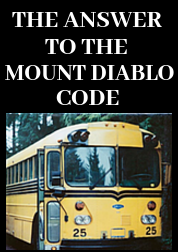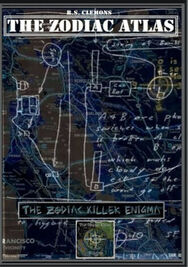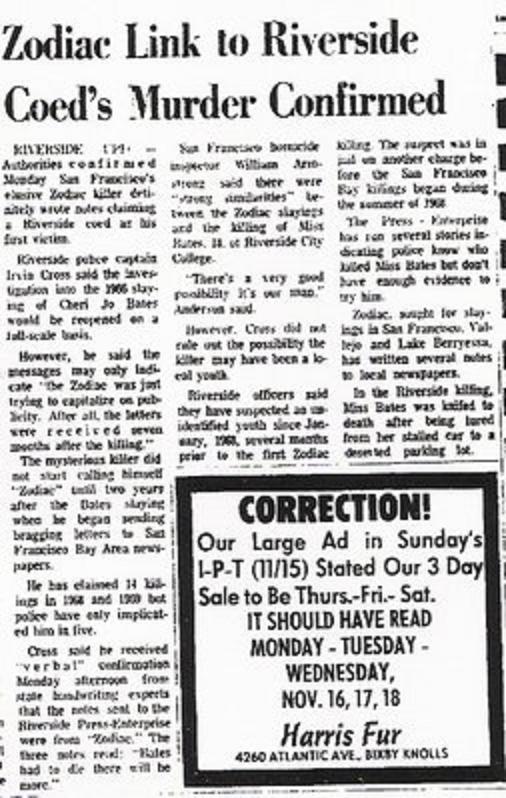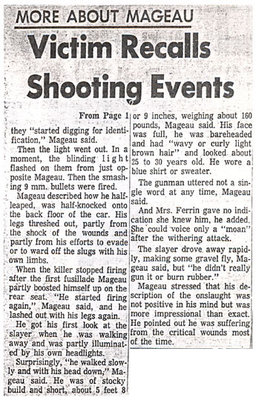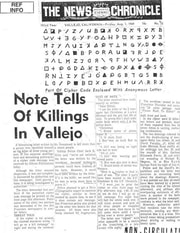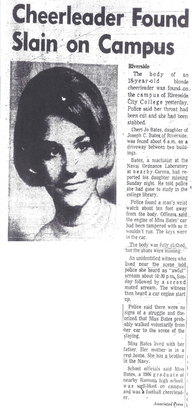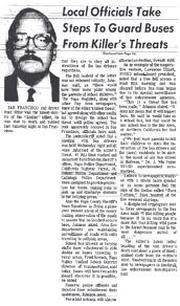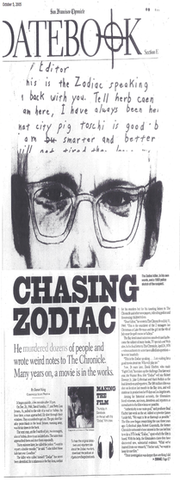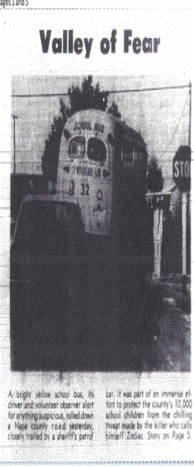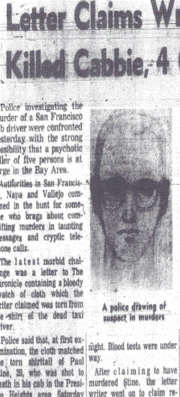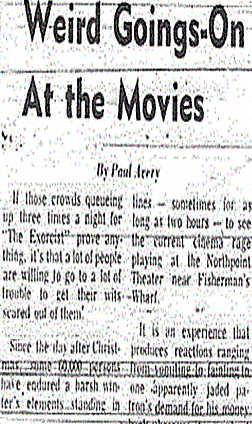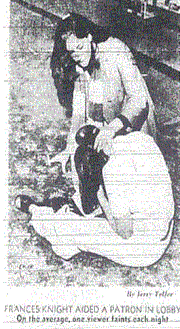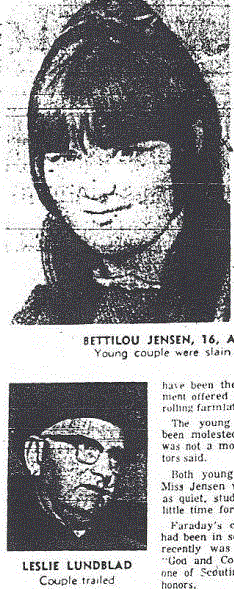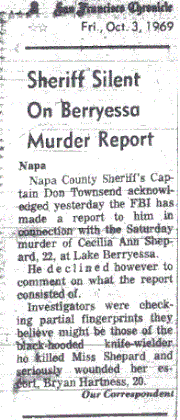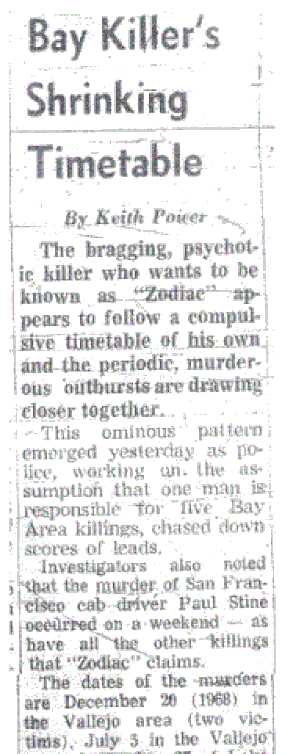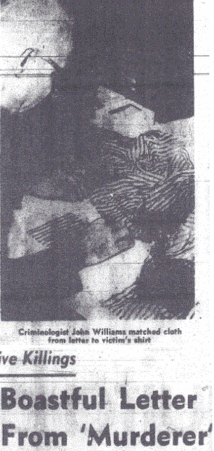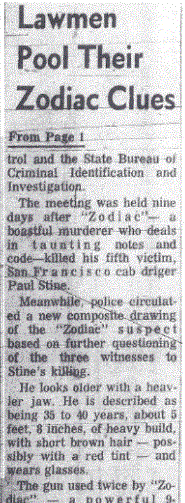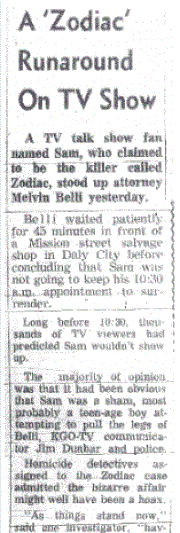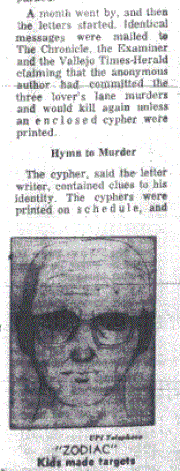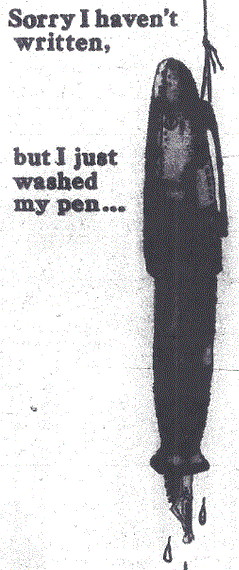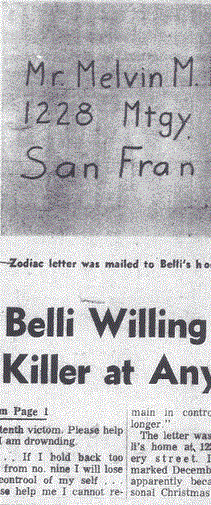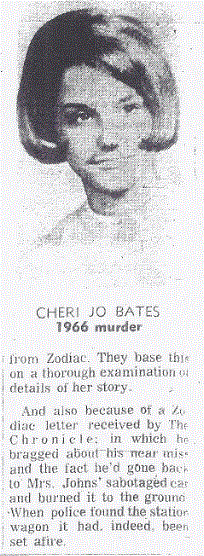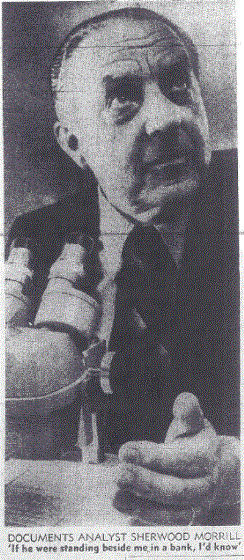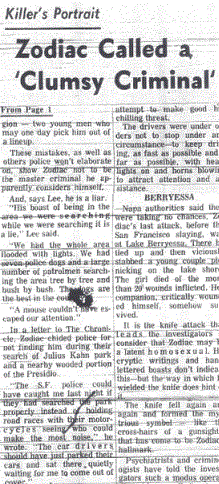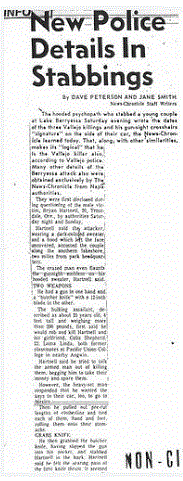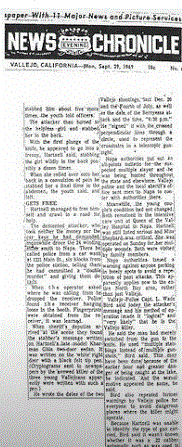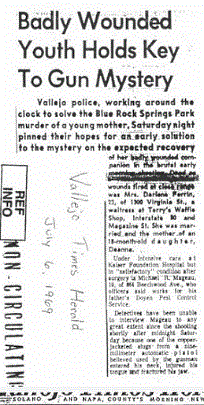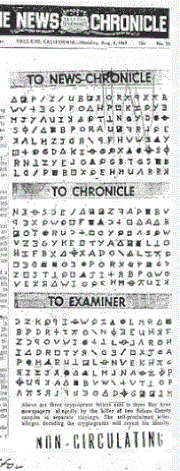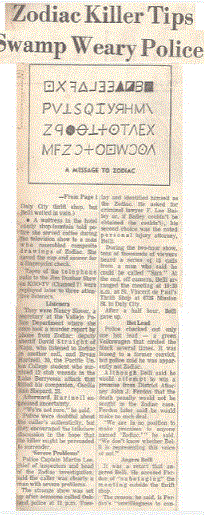This was equally true of the Riverside Desktop Poem, discovered by a Janitor at Riverside City College in the December of 1966, after the murder of Cheri Jo Bates and after the 'Confession' letter, but in all probability was written before the October 30th 1966 murder. It gave a chilling prelude to what may transpire, what may be denied, but ultimately the threat of more to come: "Just wait till next time. rh." If the Desktop Poem was written in the October of 1966 by the same mind who typed the 'Confession' letter, then it could be argued it was the prelude to the murder of Cheri Jo Bates, and equally argued as the first correspondence of the Zodiac Killer, if you believe a connection exists between the Bay Area and Riverside.
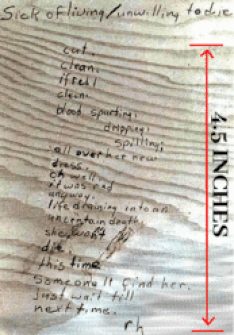 Click to enlarge
Click to enlarge What if we apply the same model to the Riverside Desktop Poem, where he signs off the poem with "Just wait till next time. rh". The Riverside Desktop Poem was discovered in the December of 1966. But it might very well have been written prior to the murder of Cheri Jo Bates on October 30th 1966, and the warning of "Just wait till next time. rh" was referring to the time and place of his next murder. Remember, the author of the Confession letter had suggested he was trying to lure Cheri Jo Bates into his vehicle. This may possibly indicate he had planned to murder Cheri Jo Bates later than the believed 10:30 pm, when screams emanated from the alleyway, likely on Halloween Day itself, but something clearly had resulted in the unplanned struggle in the alleyway and her 'premature' murder from the perspective of the killer. Had he achieved his objective in luring the young woman into his vehicle, the likely prediction of the Riverside Desktop Poem would have come true: "Just wait till next time. riverside, halloween." The author was giving us the area of the crime and the exact date. The Riverside Desktop Poem was the ode to murder, the 'Confession' letter was its completion. He may have planned the murder of the young woman on October 31st 1966, the day she was ultimately discovered by groundskeeper Cleophus Martin.
On March 13th 1971 the Zodiac Killer referenced his exploits in Riverside by 'complimenting' the police on connecting the murder of Cheri Jo Bates to him: "I do have to give them credit for stumbling across my riverside activity, but they are only finding the easy ones."
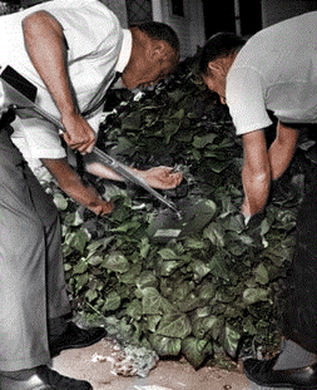
How many of these calls were followed up is hard to determine, but curiously on November 14th 1966, one day after the highly publicized library reconstruction, the police did get a call from a Riverside City College gardener: "That he had unearthed a hunting knife with his rake. The knife had apparently been buried near the murder scene. Detectives hurried to the campus and turned over the knife to the homicide detail. However, examination failed to show any evidence of dried blood on the knife blade. Also, its width did not compare with the incisions made by the stab wounds." Did the murderer of Cheri Jo Bates plant the hunting knife and make a call to police, which ultimately got lost in the myriad of calls flooding the switchboard, and consequently was not followed through? Or did the killer make contact with the Riverside City College gardener to volunteer this information, while viewing the unfolding police presence from a distance?
The police had thoroughly searched the crime scene with metal detectors in the days after the murder, so it seems likely the knife was planted subsequent to their search by either the perpetrator or a misguided prankster. The planting of a larger hunting knife near the murder scene may have been another foreboding message by the killer, that "It was just a warning. Beware...I am stalking your girls now." Stalking them with a larger and more deadly knife. After all, he did claim that he "plunged the knife into her and it broke."
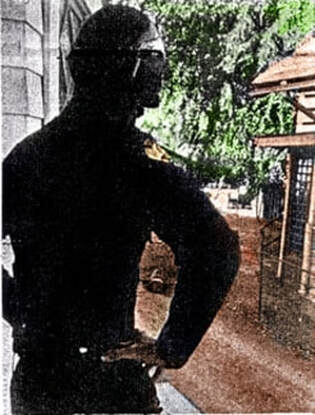
Does this center the investigation close to the college campus?
The author of the 'Confession' letter was fond of referring to that "alley," when he stated "Maybe she will be the beautiful blond that babysits near the little store and walks down the dark alley each evening about seven" and "it just might save that girl in the alley." Was he referring to the alleyway in which Cheri Jo Bates was murdered, or some other alley in the vicinity of the Riverside City College campus? Somewhere he could monitor the comings and goings of young attractive women. If he was able to go unnoticed, without drawing suspicion to himself around the college campus the evening of October 30th 1966, had composed the Desktop Poem earlier that month, and had subsequently planted the knife near the crime scene, was this indicative of somebody who worked at, or frequented the college on a regular basis? Somebody who could travel within the confines of Riverside City College unchallenged and blend into the background.
The Timex watch discovered ten feet from the body of Cheri Jo Bates, apparently ripped off the wrist of the killer in the struggle, had white paint specks on its face. The Riverside City College was undergoing renovation at this point in time, so is this another small pointer. The attack on Cheri Jo Bates was fairly prolonged, evident by the wounds sustained by the young woman, inflicted on her in an alleyway bordered by two vacant properties. Is this yet further indication of prior knowledge to college affairs, that the killer was prepared to attack Cheri Jo Bates here, knowing that nobody resided within these properties. This again, reinforcing the idea that the murderer either worked within the college campus, or frequented it regularly. He would seemingly stick around until at least April 30th 1967, when three more virtually simultaneous communications were received from the alleged murderer, in similar fashion to the beginning of the Zodiac correspondence, just over two years later.





 RSS Feed
RSS Feed
